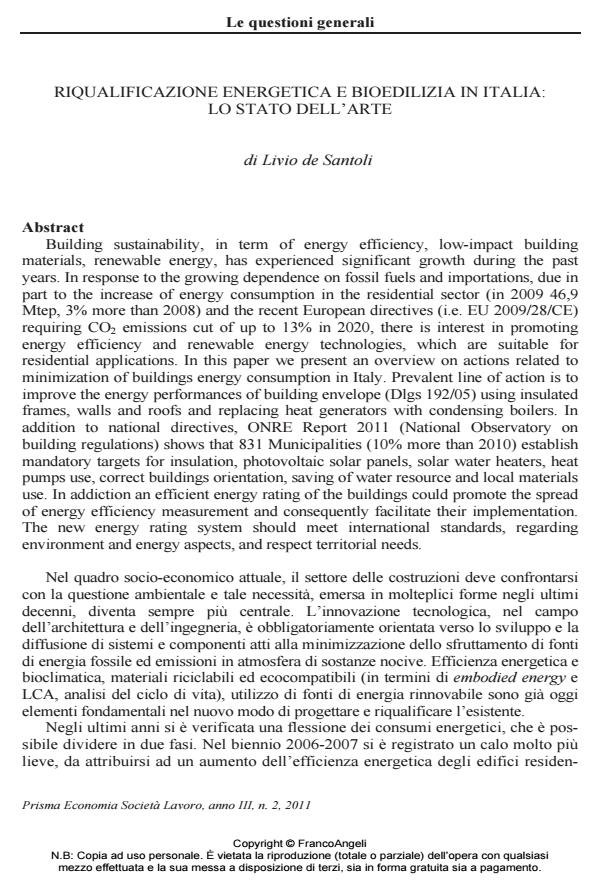Riqualificazione energetica e bioedilizia in Italia: lo stato dell'arte
Journal title PRISMA Economia - Società - Lavoro
Author/s Livio de Santoli
Publishing Year 2012 Issue 2011/2
Language Italian Pages 15 P. 74-88 File size 1139 KB
DOI 10.3280/PRI2011-002007
DOI is like a bar code for intellectual property: to have more infomation
click here
Below, you can see the article first page
If you want to buy this article in PDF format, you can do it, following the instructions to buy download credits

FrancoAngeli is member of Publishers International Linking Association, Inc (PILA), a not-for-profit association which run the CrossRef service enabling links to and from online scholarly content.
Building sustainability, in term of energy efficiency, low-impact building materials, renewable energy, has experienced significant growth during the past years. In response to the growing dependence on fossil fuels and importations, due in part to the increase of energy consumption in the residential sector (in 2009 46,9 Mtep, 3% more than 2008) and the recent European directives (i.e. EU 2009/28/CE) requiring CO2 emissions cut of up to 13% in 2020, there is interest in promoting energy efficiency and renewable energy technologies, which are suitable for residential applications. In this paper we present an overview on actions related to minimization of buildings energy consumption in Italy. Prevalent line of action is to improve the energy performances of building envelope (Dlgs 192/05) using insulated frames, walls and roofs and replacing heat generators with condensing boilers. In addition to national directives, ONRE Report 2011 (National Observatory on building regulations) shows that 831 Municipalities (10% more than 2010) establish mandatory targets for insulation, photovoltaic solar panels, solar water heaters, heat pumps use, correct buildings orientation, saving of water resource and local materials use. In addiction an efficient energy rating of the buildings could promote the spread of energy efficiency measurement and consequently facilitate their implementation. The new energy rating system should meet international standards, regarding environment and energy aspects, and respect territorial needs.
Livio de Santoli, Riqualificazione energetica e bioedilizia in Italia: lo stato dell'arte in "PRISMA Economia - Società - Lavoro" 2/2011, pp 74-88, DOI: 10.3280/PRI2011-002007